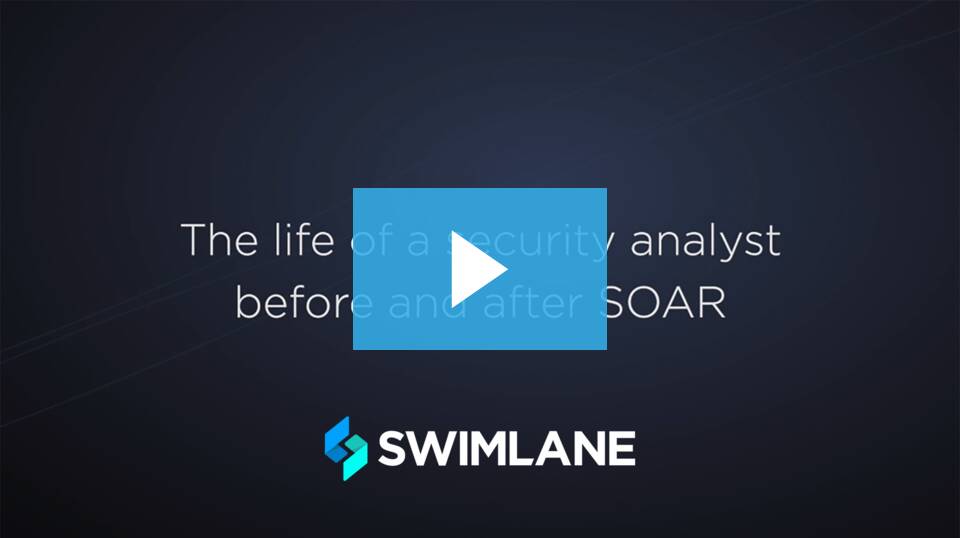What is SOAR vs SIEM: Security Solutions Explained
Terms and acronyms can get convoluted in the ever-growing security marketplace. A perfect example is SIEM and SOAR, two terms many people use interchangeably. Although security information and event management (SIEM) and security orchestration, automation and response (SOAR) have capabilities that compliment each other, they are not the same thing. With this in mind, the most successful security operations (SecOps) teams use both technologies to optimize their security operations center (SOC).
What is SIEM?
Firewalls, network appliances and intrusion detection systems generate an immense amount of event-related data – more data than security teams can reasonably expect to interpret. A SIEM makes sense of all of this data by collecting, aggregating, and then identifying, categorizing and analyzing incidents and events. This is often done using machine learning, specialized analytics software, and dedicated sensors.
A SIEM solution examines log data for patterns that could indicate a cyberattack, then correlates event information between devices to identify potentially anomalous activity, and finally, issues an alert accordingly.
So why isn’t a SIEM solution effective on its own?
Before log data is processed by a SIEM, it goes through a series of hand-offs between data aggregation tools. From there, the SIEM then runs analytics and creates an event that needs to be responded to. This data aggregation lifecycle makes threat detection and incident response slower and more expensive than it should be because SIEM isn’t built to respond to incidents – that piece of the security puzzle is still missing.
SIEM tools also typically need regular tuning to continually understand and differentiate between anomalous and normal activity. The need for regular tuning leads to security analysts and engineers wasting precious time on making the tool work for them instead of triaging the constant influx of data.
What is SOAR?
Like SIEM, SOAR is designed to help security teams reduce alert fatigue and streamline incident response processes. SOAR platforms take things a step further by combining comprehensive data gathering, case management, standardization, workflow and reporting to provide organizations the ability to implement sophisticated defense-in-depth capabilities.
Here’s how:
SOAR solutions gather alert data from each integrated platform and place them in a single location for additional investigation.
SOAR’s approach to case management allows users to research, assess, and perform additional relevant investigations from within a single case.
SOAR establishes integration as a means to accommodate highly automated, complex incident response workflows, delivering faster results and facilitating an adaptive defense.
SOAR solutions include multiple playbooks in response to specific threats: Each step in a playbook can be fully automated or set up for one-click execution directly from within the platform, including interaction with third-party products for comprehensive integration.
Put simply, SOAR integrates all of the tools, systems and applications within an organization’s security toolset and then enables the SecOps team to automate incident response workflows.
SOAR’s main benefit to a SOC is that it automates and orchestrates time-consuming, manual tasks, which enables security teams to speed up response times and better use their specialized skills. The result is faster MTTD and MTTR, reduced dwell time, and a higher level of preparedness.
How a SOAR Platform Improves the Life of a Security Analyst
In this video, Swimlane’s co-founder Cody Cornell outlines how an analyst would typically work in a security environment without and with a security orchestration, automation, and response platform.
Using SIEM and SOAR for improved SecOps
Both SIEM and SOAR improve the lives of the entire security team, from the analyst to the CISO, by increasing the efficacy of the SOC and mitigating vulnerability to the organization. While the collection of data is incredibly meaningful, SIEM solutions tend to produce more alerts than SecOps teams can expect to respond to while still remaining effective. SOAR enables the security team to handle the alert load quickly and efficiently, leaving time for important, skills-based tasks which results in a higher-performing SOC.
*** This is a Security Bloggers Network syndicated blog from Swimlane (en-US) authored by Ellyn Kirtley. Read the original post at: https://www.swimlane.com/blog/siem-soar/






